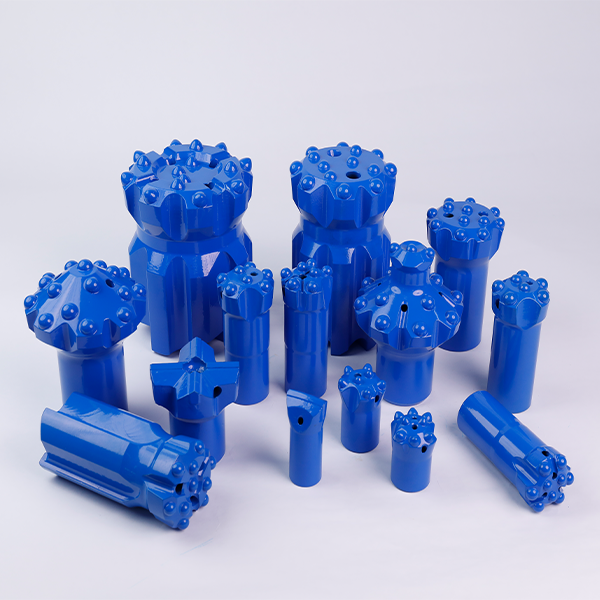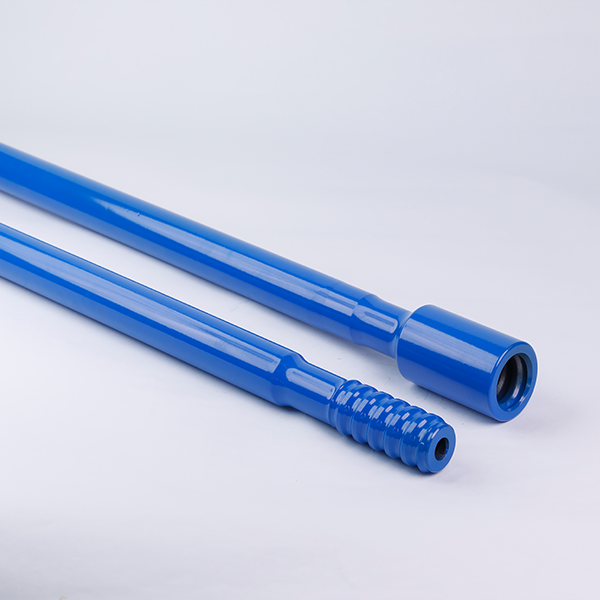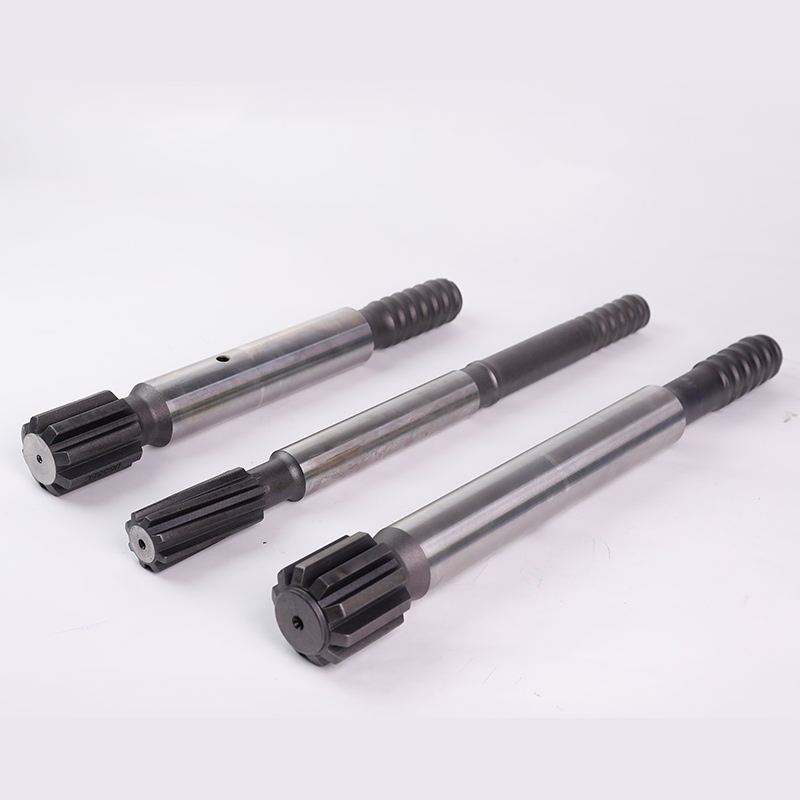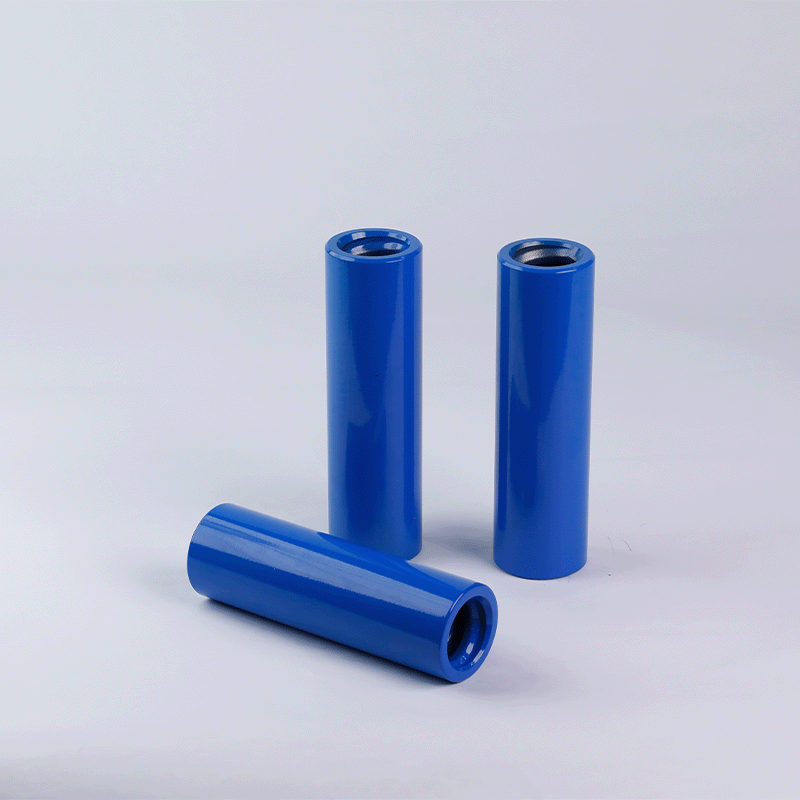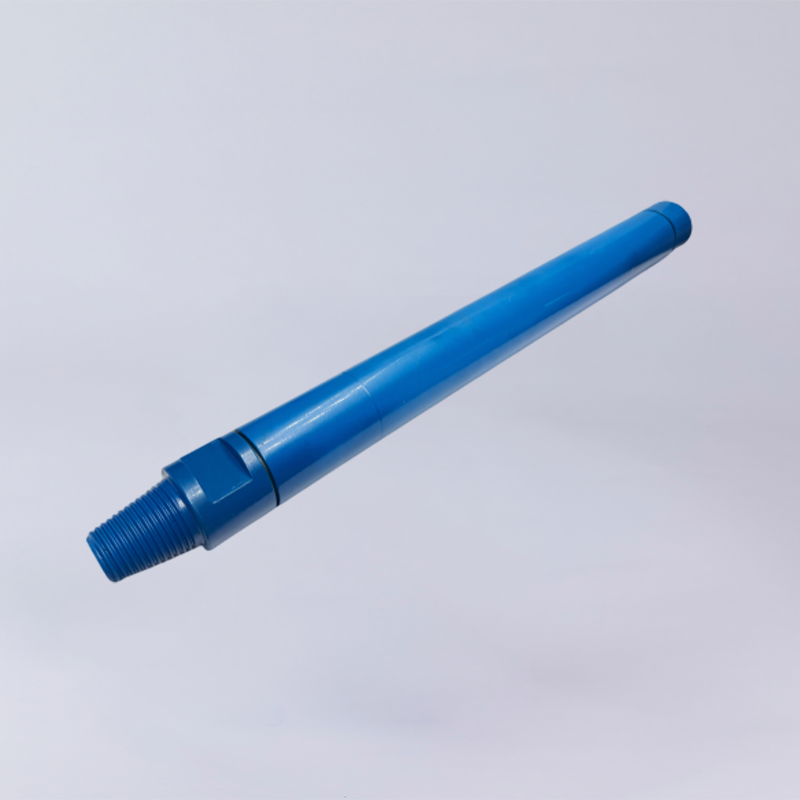In recent years, the rock drilling tools market has shown a steady growth trend. Rock drilling tools play a crucial role in various fields. In construction, mining, and road engineering projects, numerous operations rely on them to drill holes in rocks, ranging from installing support structures and extracting ores to building road foundations. It can be said that rock drilling tools are an important guarantee for infrastructure construction and resource extraction. Without high-performance rock drilling tools, the progress of relevant projects would be severely hampered.
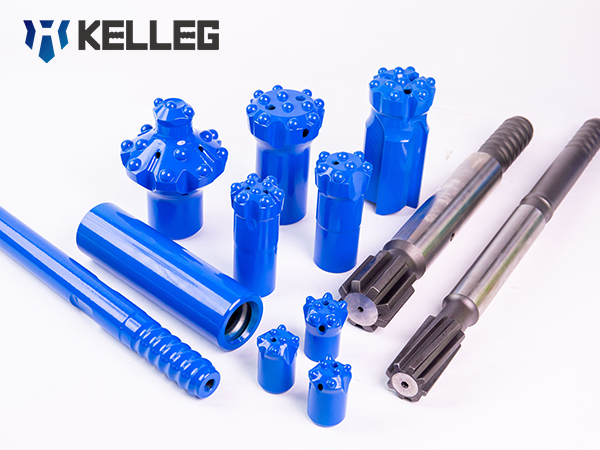
As we all know, there are many kinds of rock drilling tools, including top hammer rock drilling tools, down-the-hole rock drilling tools, rotary rock drilling tools, scraping rock drilling tools, roller cone rock drilling tools, and shield drilling tools. Each type is tailored to specific geological and operational requirements, which means that in different construction environments, the appropriate choice of rock drilling tools is of utmost importance for ensuring efficiency and safety. Producing high-quality rock drilling tools is no simple feat. First of all, in the selection of raw materials, manufacturers need to select high-quality steel cemented carbide and other materials and then need to use advanced production technology and production equipment. Of course, experience in the drilling industry is also very important.
In essence, all these steps, from raw material selection to the involvement of skilled workers, are integral parts of the production process. So, what exactly does the complete production process of rock drilling tools entail? In the following sections, we will describe each stage of the rock drilling tools production process in detail.
Raw materials
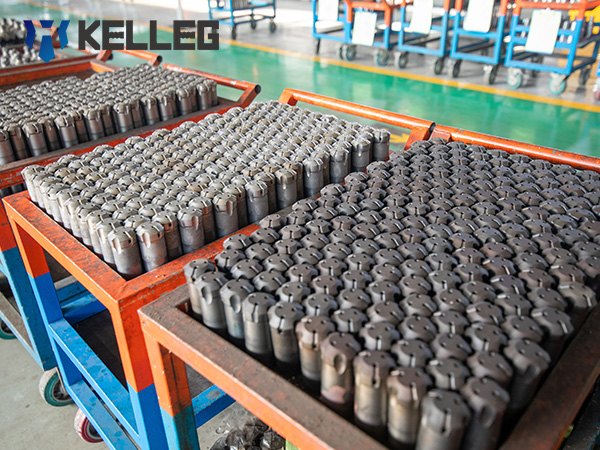
The quality performance evaluation of rock drilling tools generally needs to consider wear resistance, corrosion resistance, and fatigue resistance. Therefore, the basic requirements of steel for rock drilling tools are high strength, high toughness, wear resistance, corrosion resistance, and high impact fatigue performance.
Steel
Steel is a fundamental raw material for many components of rock drilling tools. For drill rods, high-strength alloy steels are commonly used. These steels, such as those with appropriate chromium and molybdenum content, can provide the necessary strength and toughness to withstand high stress and torque during drilling operations.
Cemented Carbide for Rock Drilling
Cemented carbide is another key material, especially for drill bits. Different types of cemented carbide are selected according to the specific requirements of the drilling task, such as the hardness of the rock and the expected drilling depth. For instance, when drilling in extremely hard rock, a cemented carbide with a higher carbide content and a lower cobalt content might be chosen for its enhanced wear resistance.
Solder
Soldiers play an important role in the assembly process of rock drilling tools. It is used to join different components together. The solder should be able to withstand the high temperatures and mechanical stresses during the operation of the rock drilling tool. In addition, it should have good corrosion resistance to prevent the joints from weakening over time due to environmental factors.
Hot-working
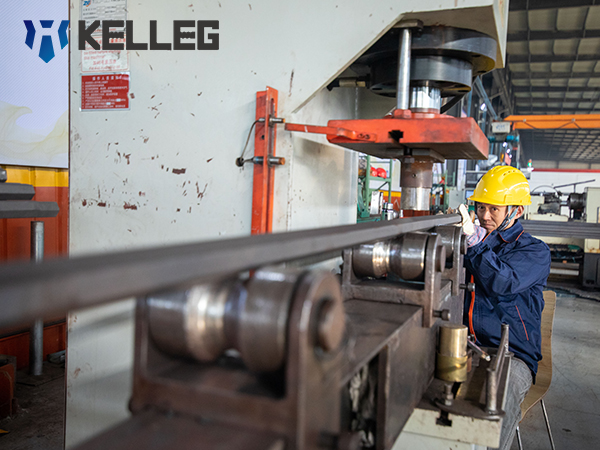
Hot working is a processing method that produces plastic deformation and recrystallization of metal materials at the same time under conditions above the recrystallization temperature. This critical stage significantly affects the performance and quality of rock drilling tools. Hot working generally includes processes such as casting, forging, welding, and heat treatment, each of which plays a unique and important role in the production of rock drilling tools.
Casting
Casting is often used to produce certain parts of rock drilling tools, such as certain parts of drill bits and parts of down-the-hole (DTH) hammers. Through casting, manufacturers can produce a large number of parts with consistent quality, ensuring that each rock drilling tool meets the necessary standards.
Forging
Forging is a key process for many drill rods and shank adapter components. High-quality steel is heated to an appropriate temperature above its recrystallization point and then formed using compression force. This allows the drill pipe to better withstand the high stresses and torques applied during rock penetration, reducing the risk of breakage and ensuring long-term reliability.
Welding
Welding is a manufacturing process and technology that joins metals or other thermoplastic materials by heating, high temperature, or high pressure.
Therefore, welding needs to be performed under carefully controlled conditions to avoid defects such as porosity or cracks that can affect the performance and safety of rock drilling tools.
Cold working
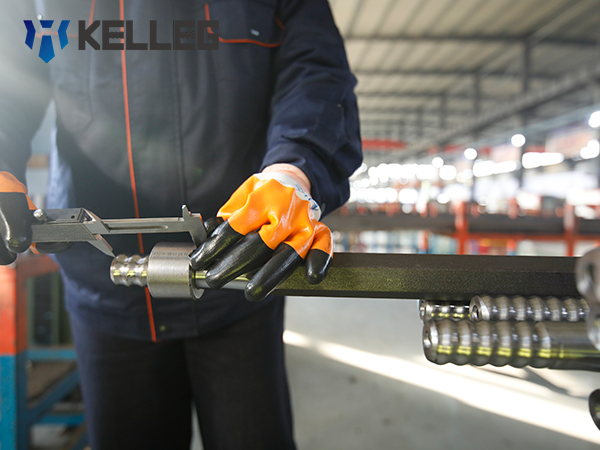
In metal technology, cold working refers to the process of plastic deformation of metal below the recrystallization temperature, such as cold rolling, cold drawing, cold forging, stamping, cold extrusion, etc. This set of processes plays a significant role in the production of rock drilling tools, enhancing their properties in specific ways.
Cold Rolling
Cold rolling can be applied to certain flat or cylindrical components of rock drilling tools. The cold-rolling process increases the hardness and strength of the metal, making these components more resistant to wear and deformation during the operation of the rock drilling tools. This is especially important for parts that are in direct contact with the rock or other abrasive substances.
Cold Drawing
Cold drawing is often used for producing long, slender components. In the context of rock drilling tools, cold-drawn drill rods can better withstand the tensile and bending forces encountered during drilling, improving the overall performance and reliability of the tool.
Cold Forging
Cold forging is suitable for shaping complex-shaped parts of rock drilling tools with high precision. By applying high pressure to the metal at a low temperature, the metal is forced to flow into the desired shape. Cold forging can achieve tight tolerances and excellent surface finishes, which are crucial for the proper functioning of these parts.
Stamping
Stamping is employed to create various flat or shallow-shaped components in rock drilling tools. Stamping is a cost-effective method for mass-producing these components. During the stamping process, the cold-working effect increases the strength of the metal, ensuring that these parts can perform their intended functions without failure in the drilling environment.
Cold Extrusion
Cold extrusion is useful for manufacturing components with specific internal or external geometries. This process not only imparts the desired shape but also enhances the mechanical properties of the metal. The increased hardness and strength obtained through cold extrusion make these components more durable and better able to withstand the mechanical stresses associated with rock drilling operations.
Heat treatment
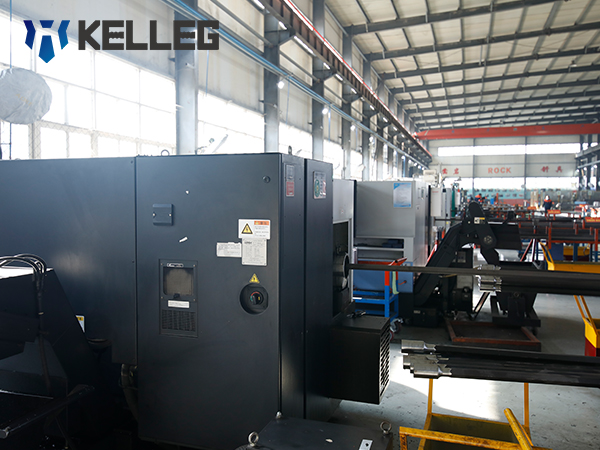
Heat treatment refers to a metal thermal processing process to obtain the expected structure and properties through heating, heat preservation, and cooling while the material is in a solid-state. In the production of rock drilling tools, heat treatment is a crucial step that significantly influences their performance, durability, and overall quality.
Quenching
Quenching is a fundamental heat treatment process for many components of rock drilling tools. The drill rods are first heated to a specific high temperature, typically above the critical transformation temperature of the steel. Once heated, the drill rods are rapidly cooled, usually by immersion in a quenching medium like oil or water. For example, in the case of DTH drill rods, the increased hardness obtained through quenching allows them to better withstand high-impact forces during drilling operations, reducing the risk of deformation and wear.
Tempering
After quenching, tempering is often carried out. Tempering is essential because quenching can make the metal very brittle. For rock drilling tool components, tempering helps to relieve the internal stresses generated during quenching and improve the toughness of the material.
Annealing
Annealing is another important heat treatment process. It is used to soften the metal and relieve internal stresses in components that may have accumulated during previous manufacturing processes like forging or cold working. After annealing, the material becomes more homogeneous in structure, which also contributes to better mechanical properties and longer service life of the rock drilling tool components.
Anticorrosion
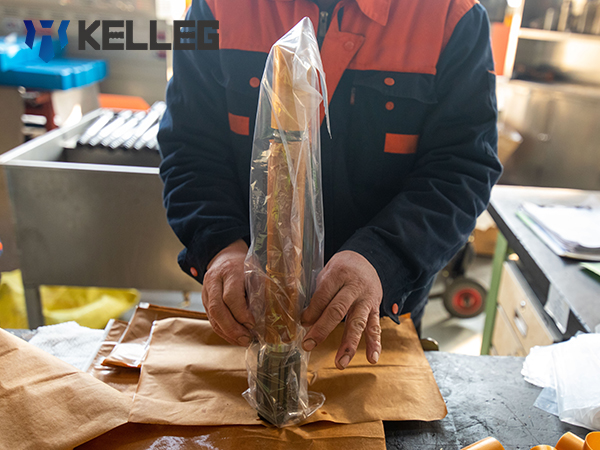
Anticorrosion is the use of various means to protect metal objects that are prone to corrode and to extend their service life. For rock drilling tools, which are often exposed to harsh environments during operations in mines, construction sites, and other places, anticorrosion measures are of vital importance. Usually, chemical anticorrosion, physical anticorrosion, electrochemical anticorrosion, and other methods are used.
Chemical Anticorrosion
One of the common chemical anticorrosion methods for rock drilling tools is coating with anti-rust chemicals. These coatings contain substances that react with the metal surface to form a protective layer, protecting the underlying cemented carbide and steel components from corrosion.
Physical Anticorrosion
Physical anticorrosion mainly relies on creating a physical barrier between the rock drilling tool and the corrosive environment. One way is to use protective sleeves or sheaths. This sleeve provides a physical shield, preventing direct contact between the metal and the corrosive medium. Another physical anticorrosion method is electroplating. The electroplated layer not only provides a physical barrier but also has its own corrosion-resistant properties, enhancing the overall protection of the component.
Electrochemical Anticorrosion
Electrochemical anticorrosion methods are also applied to rock drilling tools. An external direct current power source is used to make the rock drilling tool the cathode of an electrochemical cell, effectively preventing the oxidation and corrosion of the metal. This method is often used in large-scale drilling projects where long-term and reliable anti-corrosion protection is required.
Strengthening and other processes
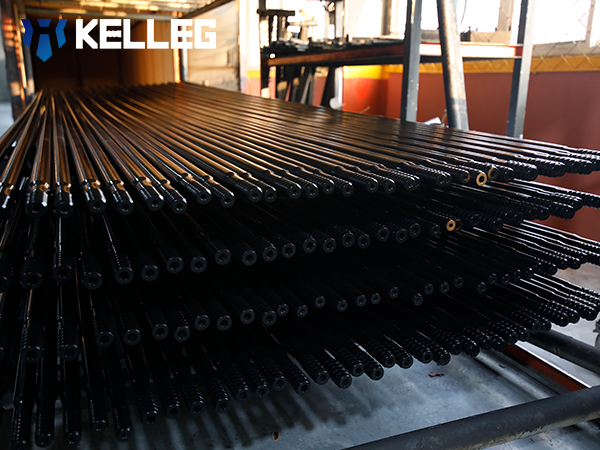
The scientific rigor of the production process of rock drilling tools directly determines its quality. From what we mentioned above about the wide variety of rock drilling tools, it can be seen that rock drill bits and rods are the most common products in daily operations, so let’s expand and share the production process of rock drill bits.
The production process of rock drill bits: raw steel blanking-forging forming-machining-heat treatment-machining-cemented carbide insert.
At present, there are two main types of drill rod materials, one is the drill rod material without carburizing treatment, only heat treatment, such as 55SiMnMo, etc.; One is the need for carburizing treatment, the selected material is generally carburizing carbon steel, typical of 27SiMnNi2CrMo(FF710), (18~23)CrNi3Mo, etc. Another is for heave drill rods: hollow bar stock-blanking-machining-carburizing-heat treatment.
Therefore, to meet the market demand, there are some companies specializing in the production of drill bits and drill tools, such as Sandvik and AtlasCopco.
Conclusion
After years of development, the rock drilling tool industry has achieved remarkable progress. However, in the market, the number of non-dominant brands still far exceeds that of the dominant ones. As a result, there remains a gap in the service life of rock drilling tools between these non-dominant brands and their international counterparts.
Yet, with the escalating demand for rock drilling tools, most companies are bound to engage in research and innovation to address diverse market needs. Beyond delving into every aspect of the rock drilling tool production process, from raw material selection to anti-corrosion measures, manufacturers must stay vigilant about market dynamics. They need to closely monitor advancements in geotechnical construction technology, blasting technology, and rock drilling machinery. By aligning their product development with the evolving requirements of construction projects, they can offer users highly competitive and distinctively differentiated rock drilling tools.
In this ever-changing landscape, innovative thinking is the linchpin for enterprises. It enables them to pioneer new manufacturing techniques, optimize product performance, and enhance user experience. Only by embracing innovation wholeheartedly can they carve out a niche and thrive in the cutthroat market competition, propelling the rock drilling tool industry to even greater heights.

